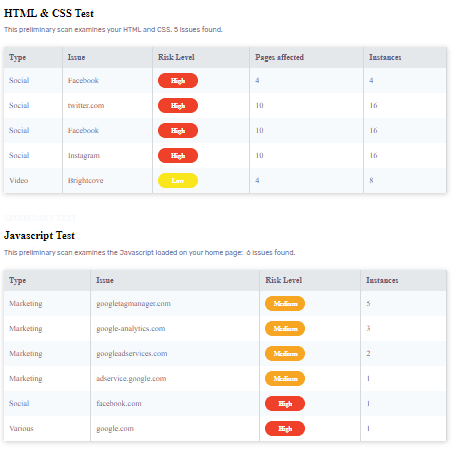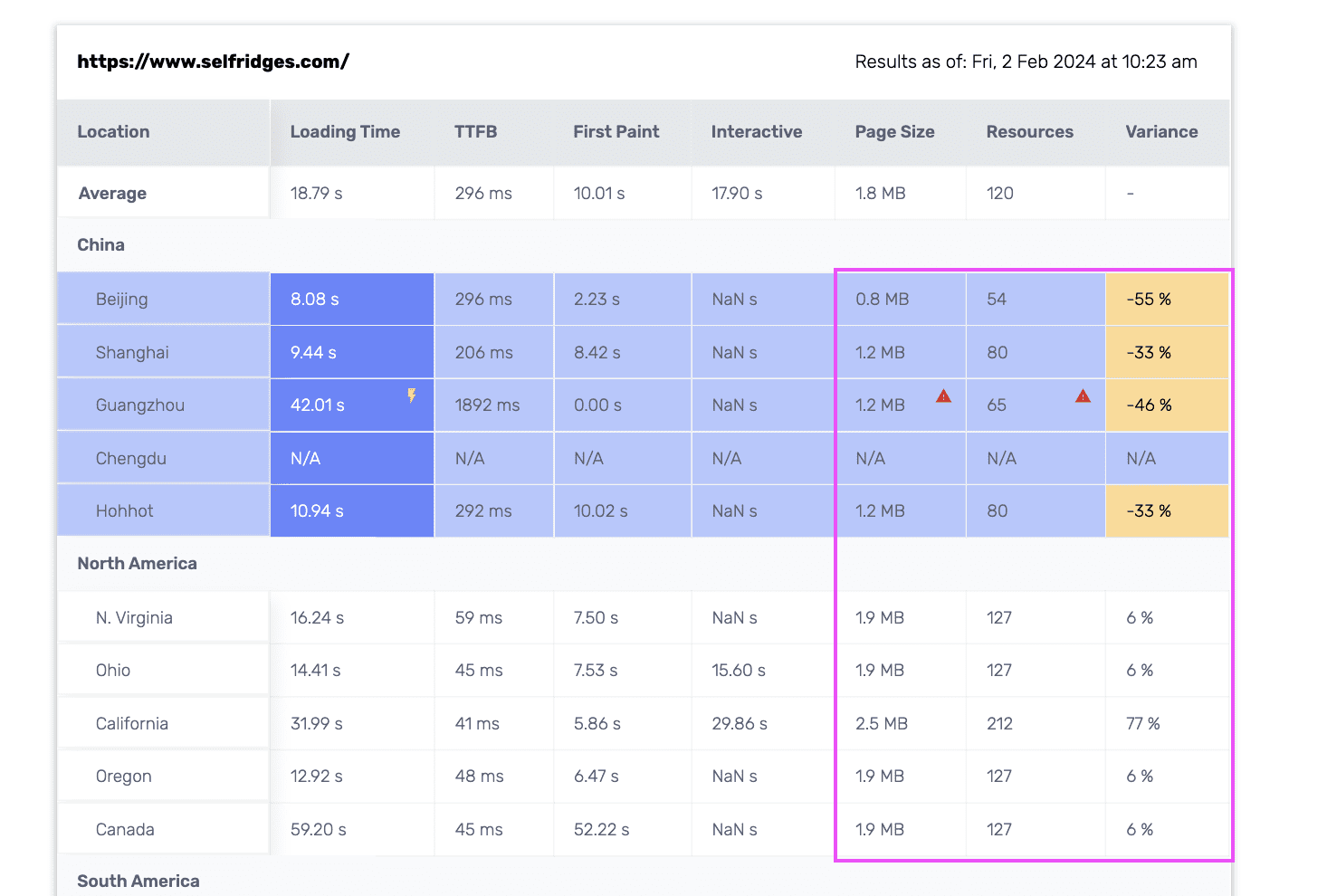1 - Expected post-Chinafy results
How to Test My Website in China? Does My Website Work in China? A Guide to Website Testing Tools in China
How Do I Check if My Website Works in China?
Testing your website in China requires a nuanced approach to address issues such as latency, content compatibility, and search engine optimization.
This article will share the step-by-step process of testing your website in China using Chinafy’s suite of web optimisation tools.
From assessing speed to evaluating code compatibility and SEO performance, we've got you covered.
Performance Metrics
Performance is made up of both speed and deliverability. The metrics that measure these aspect include -
Speed-related:
Time to First Byte (TTFB): Time to First Byte represents the duration between the moment a browser sends a request for a page and the instance it receives the first byte of data from the server. This duration is the time taken to establish a connection through TCP and SSL handshake (in cases where the request is made via HTTPS), along with the initial DNS lookup process.
First Contentful Paint (FCP): FCP signifies the moment when the browser initially renders the initial fragment of content from the Document Object Model (DOM), indicating to the user that the page is loading.
Time to Interact: Time to Interact denotes the duration required before visitors can commence scrolling on a page, clicking on links, and engaging with the website's interactive elements.
DOMContentLoaded: The DOMContentLoaded event triggers when the initial HTML document has been fully loaded and parsed. It is often utilised to ascertain when the page has concluded loading entirely.
Notably, certain files may be categorized as 'trailing resources,' signifying that they tend to load towards the end of the page loading process.
Examples of such trailing resources are analytics scripts (e.g., Google Analytics), which do not directly influence the user's site experience but are nonetheless part of the site's content.
In some instances, when the remainder of the site exhibits sluggish loading or includes incompatible resources, the functionality of these trailing resources may be adversely affected since the site fails to render them within a reasonable timeframe.
Deliverability
Number of Requests: It's pivotal to compare the total number of requests served from the 'original' website in China versus the 'post-Chinafy' website in China.
Typically, this comparison illustrates why the 'total page time' loaded may surpass the original, as the post-Chinafy site delivers a substantially higher volume of resources, ranging from 50% to 90% more.
SEO Performance
Indexed Pages: The pages of a website that a search engine has visited, analysed, and added to its database of web pages
Learn more about key terms across website performance, technologies and more through Chinafy’s Glossary
Web Performance Tools for China
China Code Test
It's crucial to identify any high-impact code incompatibilities that may hinder your website's functionality in China. Chinafy's Code Test tool allows you to identify issues such as YouTube videos, Google Fonts, and Facebook assets that may be blocked or slowed down in China.

Simply enter your site URL in the space provided then click run test. The results will show you the incompatible resources across a 10 page sample of your website.

Chinafy's code test on nike.com identified resources that are made inaccessible or slow which could potentially slow down the website in China.
Global Speed Test
With Chinafy’s Global speed test, you can assess how quickly your website loads from 18 server locations worldwide, including key cities like Beijing and Shanghai, using various types of network conditions (i.e. 3G, LTE, and wifi)

Start by inputting your URL and selecting the connection type. On the above sample, we’ve run a test on selfridges.com.

At first glance, it may appear that selfridges.com loads faster in China based solely on the Loading time metric. However, what may be more crucial is the Page size or the number of Resources that load successfully (on the right side).
It's typical to anticipate variances in the number of resources across regions. If it exceeds 5%, some parts of the page may display improperly.

If you need additional information, you can also click over a variance, there you can see the waterfall breakdown of specific resources.
Visual Speed Test
Gain insights into your website's loading process in China through a visual comparison of its performance.China’s visual speed test has 19 test locations and different network strength and speeds, which will allow you to visualise your website’s user experience in China.
We’ve sampled Yale’s website below:

Side by side comparison of the website loading in different locations (Use dropdown on the left to choose) vs. Beijing, Shanghai, and Guangzhou (Use the slider to isolate specific times).

Information about loading times, page size, and number of resources can also be found in the Key Performance Metrics section just below the comparison video.
SEO Basic Test
Finally, it's essential to assess your website's search engine optimization (SEO) performance in China.
Chinafy's China SEO Basic Test tool enables you to compare how many pages of your site are indexed by major search engines in China, including Baidu, Sogou and 360

The closer the number of pages indexed in China is to its Google equivalent, the better the indexability of your website is.
Here are the results for gracobaby.com:

Number of indexed pages per search engine

For advanced analyses on a website’s performance compatibility issues, and deliverability in China, submit website to Chinafy team via the Get Started form.



1 - Expected post-Chinafy results






























